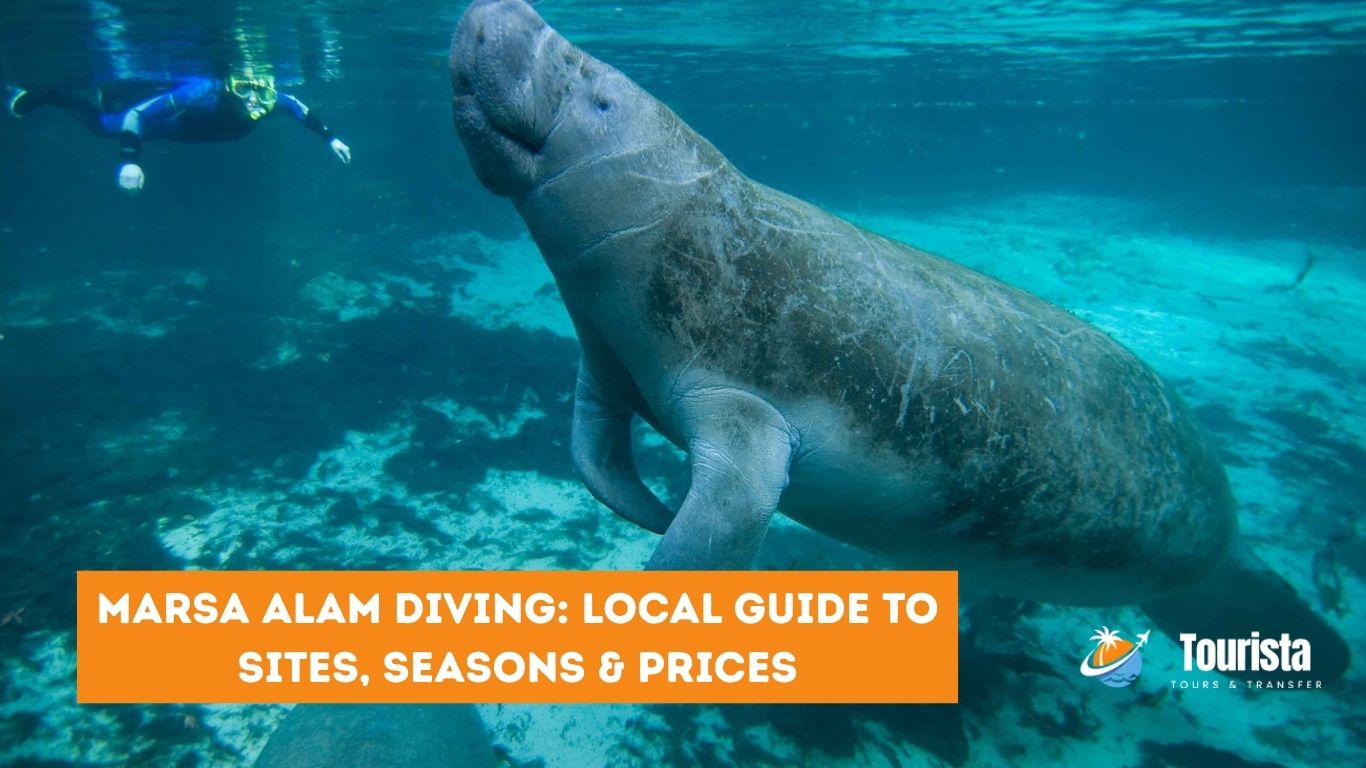Marsa Alam Diving – Local Guide to Sites, Seasons & Prices
Plan your Marsa Alam diving the easy way. This guide picks the best sites for every level (from calm bays like Abu Dabbab to advanced walls at Elphinstone), shows the right season for each area, explains prices and what’s included, and gives simple routes for beginners and experienced divers. You’ll also get a handy map, a marine-life calendar, clear safety tips, and step-by-step booking advice so you can choose, plan, and dive without stress.
Table of Contents
Sites Map
Use the map at the top of this guide to plan your Marsa Alam diving day in seconds. Toggle Shore or Boat to match how you like to enter the water, then pick Beginner, Intermediate, or Advanced to filter the pins. Click any site to see depth, highlights, and a quick travel note from town or Port Ghalib.
Key sites at a glance
- Abu Dabbab (Turtle & Dugong Bay) — Shore entry, sandy bottom, easy navigation. Perfect for first ocean dives and long, relaxed profiles. Expect turtles; if you’re lucky, a dugong.
- Marsa Mubarak — Sheltered bay by boat, gentle conditions and big coral blocks. Fab for beginners and snorkellers in the same group.
- Marsa Egla — Shore entry with a gradual slope and healthy hard coral. Calm, simple, great for skills refreshers.
- Elphinstone Reef — Advanced boat dive with possible current. Steep walls and plateaus; seasonal pelagics. Minimum Advanced Open Water recommended, plus recent dives.
- Sha‘ab Samadai (Dolphin House) — Large lagoon reached by boat. Spinners are seen often, with a strict code of conduct for everyone’s safety.
- Fury Shoal (Sataya area) — A chain of southern reefs. Think caverns, swim-throughs, and dolphin encounters; usually done as a long day or mini-safari from Hamata.
- Hamada Wreck (Abu Ghusun) — Shallow, photogenic shore dive; brilliant for long bottom times and wreck lovers who are still building experience.
Planning tips
- Do calm bays in windier weather; save Elphinstone or Fury Shoal for stable days.
- Mix groups? Pair divers and snorkellers at Abu Dabbab or Marsa Mubarak so everyone has fun.
Entry Type
Experience Level
Seasons & Conditions
Marsa Alam is diveable all year. Water is warmest in July–September and coolest in January–March. Visibility is typically good year-round, often 18–30 m in settled months. Wind is the main variable on the surface; sheltered bays keep things comfortable even on breezy days.
Best all-round months: April–June and September–November
Coolest water: Jan–Mar (pack an extra layer or hooded vest)
Peak big-fish buzz at Elphinstone: mainly Oct–Dec (with some spring action)
Family-friendly bays: year-round when wind is moderate
What to wear
- Jan–Mar: 5 mm full suit + hooded vest if you feel the cold.
- Apr–Jun: 5 mm or 3–5 mm depending on your tolerance.
- Jul–Sep: 3 mm full or shorty; cover up well on the boat.
- Oct–Nov: 5 mm is comfy for two dives a day.
Simple packing list
- Reef-safe sunscreen, hat, windproof top for the boat.
- Refillable bottle and hydration tabs.
- Logbook and cert cards (especially for Elphinstone).
- If you’re new to Marsa Alam diving, bring your mask and computer for familiarity.
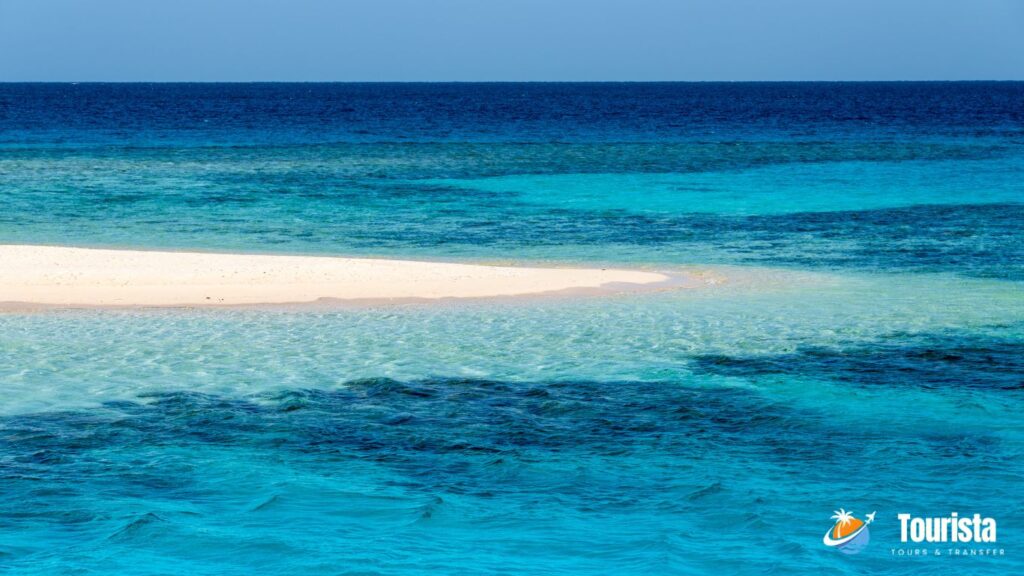
Marsa Alam Dive Sites (Highlights)
Here are the star spots for Marsa Alam diving, with simple notes on depth, who they suit, and how long to allow. Use this as a quick picker when you’re building a two-dive day.
Abu Dabbab (Turtle & Dugong Bay)
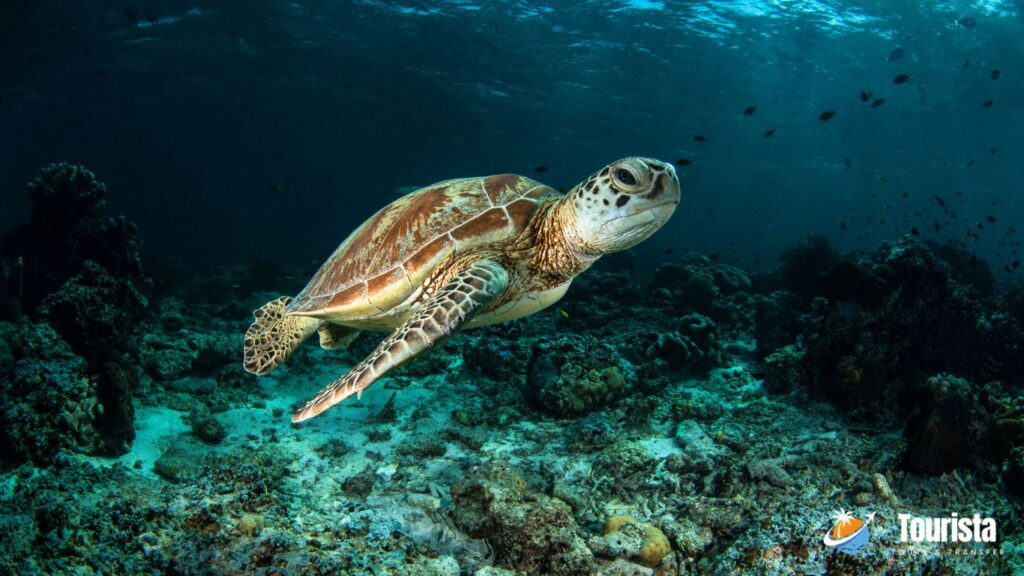
Entry: Shore
Depth: 5–18 m
Who it suits: Beginners, rusty divers, mixed groups with snorkellers
Why go: Easy sandy entry, wide seagrass meadows, regular turtle sightings, occasional dugong.
How long to allow: 2 relaxed shore dives or 1 long dive and a snorkel.
Tips: Arrive early before it gets busy. Move slowly over the seagrass; you’ll spot more life and keep sand down for better photos.
Elphinstone Reef
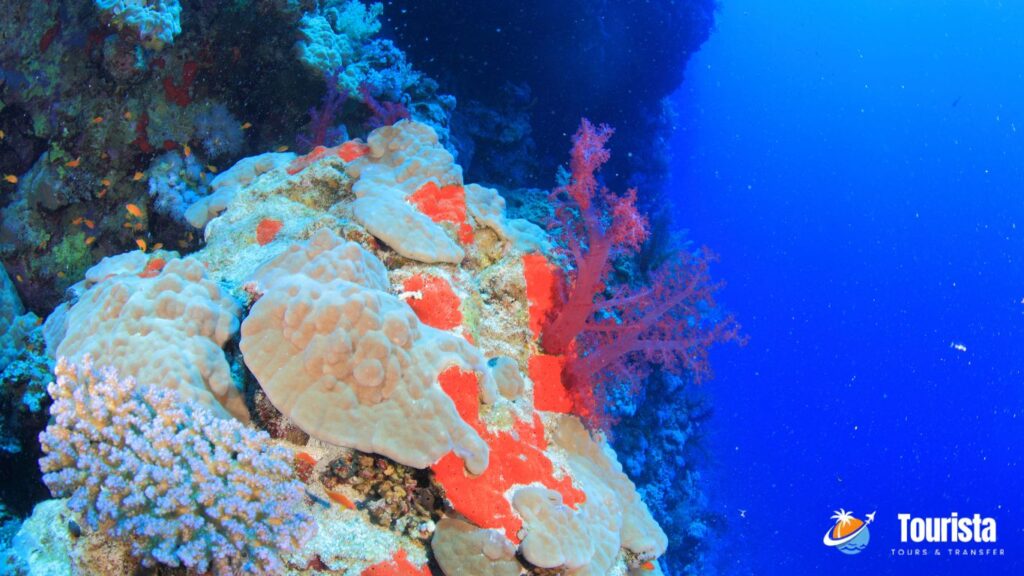
Entry: Boat (often RIB drop)
Depth: 10–40+ m with potential current
Who it suits: Advanced (AOWD recommended) with recent deep/current experience
Why go: Dramatic walls and plateaus, big-blue feeling, seasonal pelagics (including possible oceanic whitetips).
How long to allow: 2 boat dives with a decent surface interval.
Safety notes: Listen closely to the briefing, stick to the plan, watch gas and NDLs, and keep excellent buoyancy near the plateaus.
Sha‘ab Samadai (Dolphin House) / Sataya

Entry: Boat
Depth: 5–20 m
Who it suits: Beginners upwards; excellent for snorkellers
Why go: Huge, bright lagoon with frequent spinner dolphin encounters under a strict code of conduct.
How long to allow: Full day by boat (two dives or one dive + snorkel sessions).
Tips: Pack a rash guard and hat—the lagoon is sunny. Follow crew guidance around dolphins for everyone’s safety.
Fury Shoal (Sataya area and neighbouring reefs)
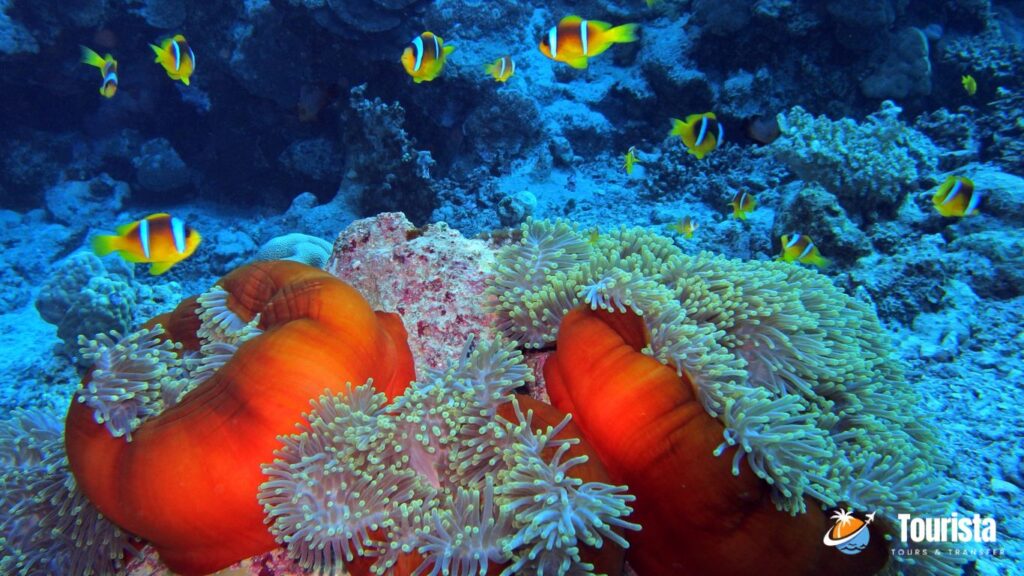
Entry: Boat (long-range) or mini-safari
Depth: 10–30 m
Who it suits: Confident intermediates and advanced
Why go: Chains of reefs with caverns and swim-throughs, colourful hard coral, chance of dolphins in Sataya lagoon.
How long to allow: Long day from Hamata or, better, an overnight/mini-safari.
Tips: If you’re prone to seasickness, take precautions—the ride can be lively on windier days.
Marsa Mubarak
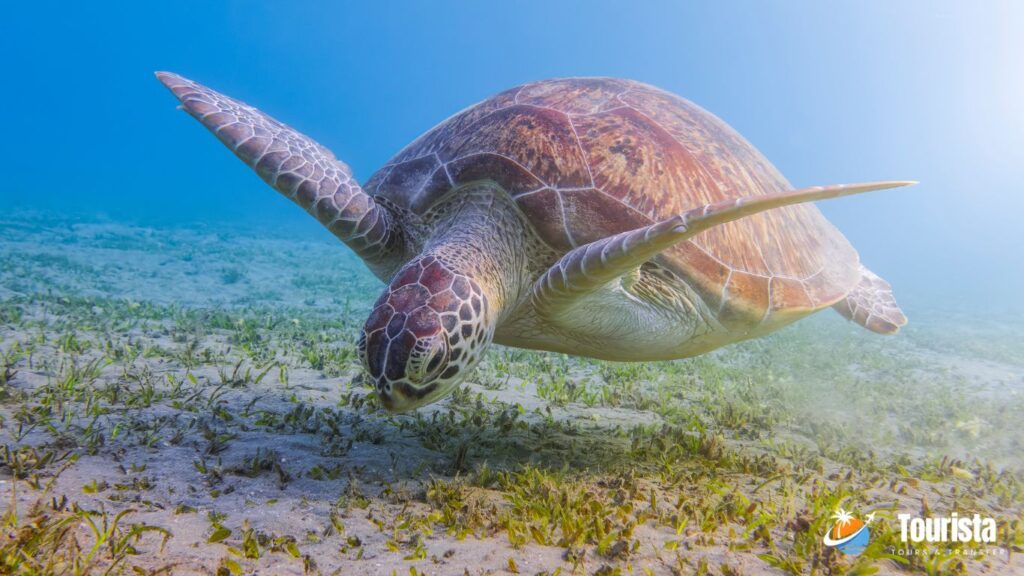
Entry: Boat
Depth: 6–20 m
Who it suits: Beginners, families, photographers who like clear, calm conditions
Why go: Sheltered bay with coral blocks and plenty of turtles; gentle navigation and easy descents.
How long to allow: 2 boat dives or 1 dive + snorkelling for mixed groups.
Tips: Bring a wide-angle lens for relaxed turtle shots and reef scenes.
Marsa Egla
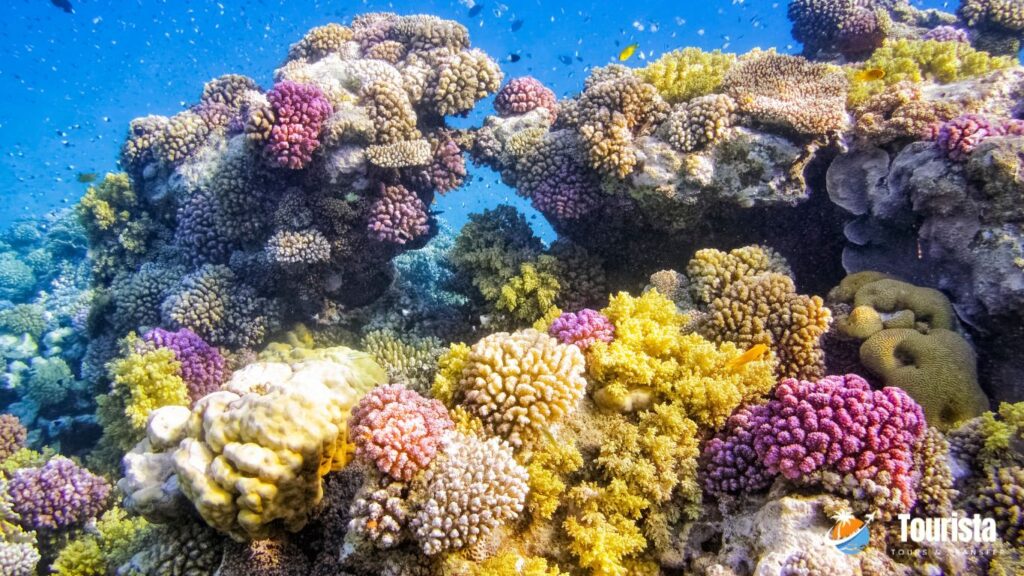
Entry: Shore
Depth: 5–18 m
Who it suits: Beginners and anyone doing a skills refresher
Why go: Simple slope, healthy coral, often very calm at the entry point.
How long to allow: 1–2 shore dives with a coffee break in between.
Tips: Great place to rebuild confidence before tackling boat dives later in the week.
Hamada Wreck (Abu Ghusun)

Entry: Shore
Depth: 3–18 m
Who it suits: All levels; perfect for new wreck fans and photographers
Why go: Photogenic shallow wreck where you can stay down a long time and explore without stress.
How long to allow: 1 long dive or 2 shorter ones depending on conditions.
Tips: Watch your finning around silt to keep the wreck clear for photos; bring a torch to peek into nooks safely.
How to pick today’s plan:
- If it’s breezy, choose Abu Dabbab or Marsa Egla and keep it chill.
- If you’re comfortable and the sea is stable, pair Elphinstone in the morning with a bay in the afternoon.
- For mixed groups, aim for Marsa Mubarak or Abu Dabbab so divers and snorkellers both have a good day.
Prices & What’s Included
We keep Marsa Alam diving prices simple and transparent. Below is the structure we use so you can compare days and build a plan that fits your level and budget. If you’re booking more than one day, multi-day packs are the best value.
Day rates (boat diving)
- 2 boat dives / day — includes tanks & weights, boat space, guide, lunch, soft drinks, hotel pick-up in the Marsa Alam / Port Ghalib area.
- Third dive (optional) — add a late-afternoon reef or a sunset snorkel for mixed groups.
- Non-diver/snorkeller rate — reduced boat place with lunch, guide in water where allowed.
Shore diving days
- 2 guided shore dives — great for Abu Dabbab, Marsa Egla, Hamada Wreck; includes tanks & weights, guide, road transfer from town.
- Add a snorkeller — easy to include family or friends at bay sites.
Multi-day packs (best value)
- 3-day pack — 3 × 2-dive days (mix boat and shore depending on conditions).
- 4–6 day packs — lowest per-day rate; ideal if you want Elphinstone + Fury Shoal + bays in one trip.
- Custom mix — beginners can build a “confidence week” (bays first, then boat days); advanced divers can target walls and southern reefs.
What’s included (standard)
- Professional guide (briefings, route, safety plan)
- Tanks & weights (DIN/Yoke adaptors available)
- Hotel pick-up/drop-off within the local zone
- Boat days: lunch, hot drinks, soft drinks
- Shore days: drinking water and rest stop
- Marine first aid & oxygen on the boat/vehicle
- Small groups matched by level wherever possible
What’s not included (typical add-ons)
- Equipment hire (BCD, reg set, wetsuit, computer, torch) — priced per item or as a full set per day
- Nitrox 32% — per tank or day supplement
- Marine park/reef fees — charged per person per reef/day when applicable (e.g., Elphinstone, Samadai)
- Port supplements / fuel surcharges — only when mandated by the marina/authority
- Long-range trips (e.g., Fury Shoal from Hamata) — extended transfer/boat supplement
- Private guide — per day (useful for skills refreshers or photographers)
Suggested bundles (pick your style)
- Beginner Bay Day — 2 shore dives at Abu Dabbab or Marsa Egla
- Add full equipment set if needed; snorkeller can join comfortably.
- Classic Boat Day — 2 boat dives at Marsa Mubarak + nearby reef
- Add third dive if the sea is calm and you’re feeling fresh.
- Elphinstone Focus (Advanced) — 2 dives at Elphinstone Reef (conditions/experience permitting)
- Add Nitrox for longer no-stop time and comfort at depth.
- South Explorer — Fury Shoal long-range day or mini-safari
- Ideal for confident intermediates/advanced; bring a windproof layer.
How to compare total cost (simple checklist)
- Day rate (boat or shore) × number of days
- Equipment hire (full set or items you need)
- Nitrox (if you want it)
- Marine fees (only at protected sites)
- Long-range/port supplements (if your chosen sites need them)
- Optional third dive or private guide
Add those lines and you’ll have the full picture before you book.
Payment, paperwork & discounts
- Payment methods: card or cash; deposits secure peak dates.
- Cert & logbook: bring certification cards and recent dive history (especially for Elphinstone).
- Medical: standard dive medical questionnaire; bring your clearance if you’ve answered “yes” to any item.
- Groups & families: ask about multi-day and family discounts when booking 3+ days or mixed diver/snorkeller parties.
Cancellations & weather
- Weather calls are made for safety. If we cannot run your chosen site (e.g., strong wind at Elphinstone), we’ll offer:
- a suitable alternative site, or
- a new date, or
- a refund/credit according to your booking terms.
- Illness or flight changes: please tell us as soon as possible; we’ll apply the fairest option within policy.
Choose Your Route (Beginner vs Advanced)
Pick a plan that fits your skills, your energy, and the sea on the day. Here are two simple routes plus a mixed-group option if you’re travelling with snorkellers.
Beginner Route — calm bays first, confidence built in
Who it’s for: First ocean dives, rusty divers, families.
Day 1 — Easy Shore Day
- Site: Abu Dabbab or Marsa Egla
- Plan: 2 relaxed shore dives (long bottom times, gentle slopes)
- Goals: Equalisation routine, trim and buoyancy dialled in, mask skills refreshed
- Tip: Aim for a mid-morning first dive when the sun lights the seagrass.
Day 2 — Gentle Boat Day
- Site: Marsa Mubarak + nearby reef
- Plan: 2 boat dives with simple navigation and plenty of turtles
- Goals: Comfortable giant stride, boat etiquette, buddy spacing
- Tip: Bring a windproof top; boat rides can feel breezy even in summer.
Day 3 — Mix & Match
- Option A: Another boat day if you loved it
- Option B: Shore + snorkel combo for photos and a slower pace
- Upgrade: Add a Discover Nitrox briefing if you’re curious about longer no-stop times later
Why this works: You stack easy wins early, then step up gently to boat entries and deeper water without pressure.
Advanced Route — walls, plateaus, and southern reefs
Who it’s for: Confident intermediates and advanced divers with recent experience.
Day 1 — Tune-up + Conditions Check
- Site: A local reef or easy bay as a warm-up
- Plan: 2 dives focusing on trim, gas plan, DSMB practice
- Tip: If sea state is perfect, you can switch this for an afternoon wall dive.
Day 2 — Elphinstone Focus
- Site: Elphinstone Reef
- Plan: 2 dives (north/south plateaus or a wall + plateau combo, conditions permitting)
- Profile: Conservative; watch currents and blue-water exits
- Pro moves: Nitrox 32% if certified; carry and know your DSMB; stick to briefed depth/time limits
Day 3 — South Explorer (conditions allowing)
- Site: Fury Shoal area (Sataya and neighbouring reefs)
- Plan: Long day or mini-safari feel with caverns/swim-throughs
- Tip: Seasickness tabs if you’re sensitive; pack extra drinking water and a hat
Why this works: You get your eye in, then hit the headline wall, and finish with variety and range.
Mixed Groups — divers + snorkellers together
Best picks: Abu Dabbab and Marsa Mubarak keep everyone happy.
- Plan: Divers do 2 easy dives while snorkellers enjoy the bay with a guide.
- Midday: Shared lunch on the boat or at the beach café.
- Afternoon: Optional third shallow dive or a chilled snorkel session.
Extras that help: Shorty suits for kids, wide-brim hats, and a simple treasure-hunt list (turtle, lionfish, anemonefish) to keep younger snorkellers engaged.
Safety & comfort rules that make every plan better
- Briefing first, photos second: know your route, signals, and turnaround points.
- Conservative profiles: especially on wall dives or if you’ve had a surface break from diving.
- Gas, NDL, buddy: check often; call the dive early if anything feels off.
- Surface kit: DSMB for boat sites, whistle, and a compact torch for peeking into swim-throughs.
- Sun & wind: hydration tabs, reef-safe sunscreen, windproof top for the ride back.
Two sample 3-day schedules
Confidence Builder (Beginner):
- Day 1: Abu Dabbab (2 shore dives)
- Day 2: Marsa Mubarak (2 boat dives)
- Day 3: Shore + snorkel combo or easy boat day nearby
Headline Hunter (Advanced):
- Day 1: Local reef warm-up (skills & DSMB)
- Day 2: Elphinstone (2 dives, Nitrox if certified)
- Day 3: Fury Shoal long-range day or mini-safari
Marine Life Spotter’s Guide
One of the best bits of Marsa Alam diving is how reliably you see “bucket list” animals alongside healthy coral. Use this guide to pick sites and months, then brief with your guide on the day.
Turtles (Green & Hawksbill)
Best sites: Abu Dabbab, Marsa Mubarak, Marsa Egla
When: Year-round; calm months (Apr–Jun, Sep–Nov) are easiest
How to spot: Scan the seagrass meadows and cleaning stations; look for resting turtles under ledges
Etiquette: Keep a few metres’ distance, no chasing or blocking their route to the surface
Photo tip: Wide-angle, stay low and let them come to you for a natural eye-level shot
Dugong
Best sites: Abu Dabbab and nearby seagrass beds
When: Unpredictable but most often on quiet, calm days
How to spot: Watch for a slow-moving “shadow” over the seagrass; guides monitor sightings on the day
Etiquette: Extra space, quiet kicks, and absolutely no attempts to follow close or touch
Good to know: You may wait a while—plan relaxed profiles and enjoy the turtles meanwhile
Dolphins (Spinner)
Best sites: Sha‘ab Samadai (Dolphin House), Sataya lagoon (Fury Shoal)
When: Frequent in settled summer and autumn weather; can appear any time
How to spot: Lagoon patrols by the crew; look for tight schools and surface activity
Etiquette: Strict code of conduct—no diving down into pods, keep group size tidy, follow the guide’s instructions
Photo tip: Go for video; keep movements slow to avoid stirring silt in the lagoon shallows
Sharks (Pelagics & Reef)
Headline chance: Oceanic whitetips at Elphinstone in season
When: Mainly Oct–Dec, with occasional spring activity
Where: Blue water off the plateaus and along the walls
Etiquette: Maintain depth/spacing, stay vertical and calm if a shark comes near; never pursue
Readiness: Advanced skills, solid buoyancy, DSMB comfort, and conservative gas/NDL plans
Rays (Eagle & Stingrays)
Best sites: Sandy patches in Abu Dabbab, Marsa Mubarak; outer reefs on boat days
When: Common in warm months; eagle rays cruise edges in clear water
Photo tip: Watch for “take-off” moments—keep distance and shoot side-on for shape
Reef Life & Macro
Corals: Strong hard-coral gardens across bays and Fury Shoal; soft corals on walls
Favourites: Lionfish, anemonefish, blue-spotted rays, crocodilefish on sand
Macro: Shrimp in anemones, nudibranchs on bommies, blennies peeking from holes
Tip: Slow down—richest finds happen when you move like a snail and scan methodically
Simple season pointers (who to target when)
- Jan–Mar: Cooler water; pick sheltered bays for long, easy dives and macro hunting
- Apr–Jun: Prime conditions; turtles everywhere, great visibility across reefs
- Jul–Sep: Warmest water; bays shine for families and snorkellers, dolphins common in lagoons
- Oct–Dec: Balanced water temps and calm spells; Elphinstone buzz for pelagic seekers
Conservation basics
- No touching, chasing, or feeding wildlife
- Perfect your buoyancy before hovering near coral or seagrass
- Use reef-safe sunscreen and keep fins high over seagrass to avoid scouring
Safety, Standards & Group Sizes
Your day should feel exciting, not stressful. Here’s how we keep Marsa Alam diving safe, smooth, and enjoyable for every level.
Experience requirements (keep it honest)
- Shore bays (Abu Dabbab, Marsa Egla): Open Water or above; suitable for first ocean dives and refreshers.
- Easy boat days (Marsa Mubarak): Open Water or above, comfortable with boat entries.
- Elphinstone & long-range reefs (Fury Shoal): Advanced Open Water (or equivalent) strongly recommended, plus recent deep/current experience. If you’ve had a long break, add a check dive first.
Briefings & in-water conduct
- Full site briefing before every dive: route, depth/time limits, currents, signals, separation plan, DSMB use.
- Buddy checks before entry; confirm gas, weights, computer, releases, and SMB.
- Conservative profiles: respect turn-pressure and no-stop limits; call the dive early if anything feels off.
Emergency readiness
- Oxygen & first aid on all boats/vehicles, with trained staff.
- Surface support keeps eyes on the water during entries/exits.
- Contact & evac plan held by the skipper/guide; you’ll hear the essentials during the briefing.
Group sizes & matching
- Small groups matched by certification and comfort (beginners together, advanced together).
- Typical ratios: 1:4–6 on easy sites; 1:4 (or tighter) for advanced/current dives.
- Private guide available if you want extra coaching, photography help, or a slower pace.
Equipment standards
- Well-maintained kit checked daily; spare masks, o-rings, and mouthpieces on board.
- DIN/Yoke adaptors available; tell us your connection when booking.
- Computers: one per diver recommended; if you’re sharing, follow the most conservative profile.
Nitrox, DSMB & extras
- Nitrox 32% available for certified divers (handy for repetitive days and Elphinstone plateaus).
- DSMB + reel required on boat sites; practise deployment on a calm dive if you’re rusty.
- Torches for wreck peeks and low-light swim-throughs; keep beams gentle to protect marine life. Check out HEPCA’s Samadai Guidelines
Health, insurance & paperwork
- Medical questionnaire required; if you answer “yes” to any item, bring a doctor’s clearance.
- Dive insurance that covers Egypt and chamber treatment is strongly advised.
- Bring cert cards and recent logbook entries, especially for advanced sites.
Weather calls & site swaps
- Safety first: if wind or swell makes a plan unsuitable, we’ll switch to a safer site, move the date, or credit/refund per policy.
- On breezy days, bays beat walls—you’ll still get a quality dive without the stress.
For Non-Divers & Families
Marsa Alam diving works brilliantly with snorkellers and kids in the same group—pick the right bays and everyone wins.
Best places for mixed groups
- Abu Dabbab: Sandy entry, seagrass for turtles/dugong, easy to see action from the surface.
- Marsa Mubarak: Calm bay by boat, large coral blocks, snorkel guide can keep the surface team busy while divers explore.
- Marsa Egla: Gentle slope and handy exit points; good for confidence-building snorkels.
How to plan the day
- Staggered fun: Divers drop first; snorkellers start a guided circuit along the reef edge. Meet up for photos between dives.
- Shade & breaks: Choose boats/bays with shaded seating, toilets, and a café stop where possible.
- Kid comfort: Shorter water stints (20–30 mins), warm tops, and a hot drink after. A simple wildlife checklist (turtle, lionfish, anemonefish) keeps them engaged.
What to bring for snorkellers
- Properly fitted masks (avoid rentals that leak), rash guards, reef-safe sunscreen, noodles or snorkel vests for newer swimmers.
- Wide-brim hat, quick-dry towel, and spare dry layers—wind can feel cool after a swim.
Safety basics for everyone
- Follow the guide’s line. No touching or chasing wildlife.
- Keep fins away from seagrass and coral.
- Hydrate between sessions and reapply sunscreen in the shade.
How to Get Here & Where to Base Yourself
Getting to Marsa Alam
- Fly into RMF (Marsa Alam Airport) and take a hotel transfer (20–60 mins to most resorts).
- Via Hurghada (HRG): allow 3–4 hours by road to Marsa Alam/Port Ghalib. Private transfers are easiest with dive bags.
Where to stay (match hotel to diving style)
- Port Ghalib area: Best for day boats to reefs like Marsa Mubarak and for runs to Elphinstone.
- Abu Dabbab zone: Perfect if you want easy shore diving and snorkelling on your doorstep.
- South (Hamata side): Handy for Fury Shoal long-range days or mini-safaris.
Simple 3-day base plans
- Bay Lovers: Stay near Abu Dabbab → 2 shore days + 1 boat day to Marsa Mubarak.
- Headline Hunter: Base in/near Port Ghalib → warm-up reef → Elphinstone → outer reef day.
- South Explorer: Overnight near Hamata for Fury Shoal access (check wind windows).
Transfers & timing
- Confirm pick-up windows the evening before (boats don’t wait).
- For Elphinstone, expect an early start and flexible return depending on conditions.
- If you’re flying home the next day, leave a 24-hour no-fly buffer after your last dive.
FAQs
Is Elphinstone suitable for me?
If you’re Advanced Open Water (or equivalent), dived recently, and are comfortable with current and blue-water procedures, yes—subject to the guide’s briefing and the day’s conditions. Otherwise, warm up with a bay and an easy boat day first.
What’s the best month to dive Marsa Alam?
April–June and September–November give the nicest balance of temps, viz and surface comfort. Oct–Dec is popular for pelagics at Elphinstone. You can dive year-round with smart site choices.
Do prices include equipment and park fees?
Day rates usually include tanks and weights. Equipment hire, Nitrox, and marine park fees (e.g., Elphinstone, Samadai) are add-ons. Check your quote for a clear, line-by-line breakdown.
Can snorkellers join the boat?
Yes—many boats welcome non-divers at a reduced rate. Choose Marsa Mubarak or Abu Dabbab so snorkellers have plenty to see while divers are down.
What’s typical visibility and water temperature?
Viz is commonly 18–30 m in settled months. Water is roughly 21–23°C in winter and 28–30°C in summer. Plan your suit accordingly (see the seasons section).
Do you offer Nitrox and private guides?
Nitrox 32% is available for certified divers. Private guides can be arranged for skills refreshers, photographers, or anyone who wants extra attention and a slower pace.
I’ve had a long break from diving—what should I do?
Book a check dive in a calm bay first. You’ll rebuild buoyancy, practise DSMB use, and feel ready for boat days.
What if the weather turns?
Safety first. We’ll switch to a sheltered site, move dates, or credit/refund per policy if a plan isn’t safe to run.

